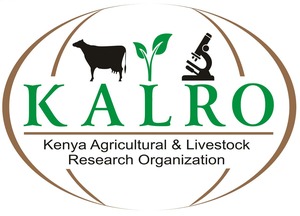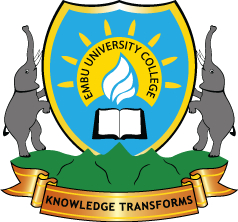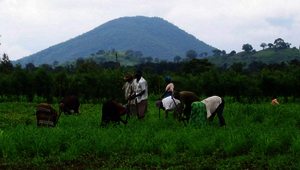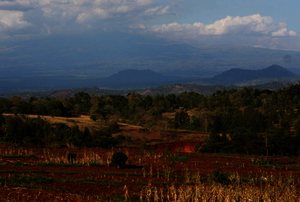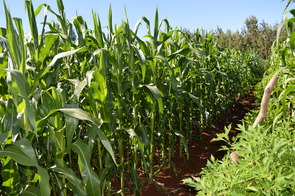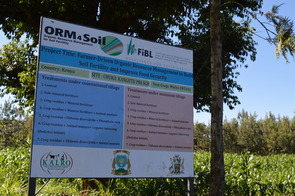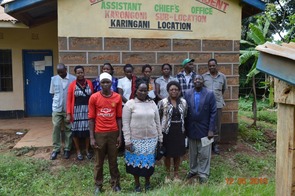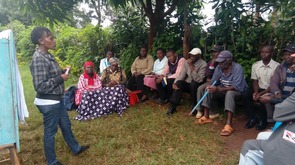National Coordination: Dr. Anne Muriuki (KALRO)
Intervention Areas:
- Chuka: Sub-humid bimodal; Mixed crops
- Thika: Semi-humid bimodal; Mixed crops
Kenya Agricultural & Livestock Research Organization
Contact person: Dr. Anne Muriuki
University of Embu
Contact person: Dr. Felix Ngetich Kipchirchir
University of Nairobi
Contact person: Dr. Wambui Kiai
Kenya
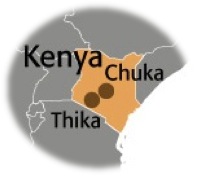
The region of central Kenya is very important to the agricultural economy of the country because of its high agricultural potential. However, soil fertility decline due to continuous cultivation without adequate addition of external inputs are leading to lower agricultural productivity and putting the future of the local farmers at stake.
One of the most common strategies to replenish soil nutrients remains the use of mineral fertilizers, although many farmers cannot afford it nor apply the recommended rates. Local organic resources have a promising potential to increase soil fertility.
Chuka
Location and Climate: The Chuka site is located at 0°19'16.7"S 37°39'20.5"E in the Tharaka-Nithi County, Meru-South Sub-County. The site sits on the eastern slopes of Mount Kenya, with a bimodal rainfall pattern, with 1200 to 1400 mm annual rainfall per year and a mean temperature of 20°C.
Main crops: Tea, coffee, bananas, maize, beans, cowpeas, sorghum, millet and others. The main livestock includes cattle, sheep, goats and chicken.
Thika
Location and Climate: The Thika site is located at 1°02'15.5"S 37°04'52.7"E, in the Muranga County, Gatanga Sub-County. It has a bimodal rainfall pattern, with 900 to 1400 mm annual rainfall per year and a mean temperature of 26°C.
Main crops: Coffee, tea, maize, beans, cowpeas, and others. The main livestock includes cattle, pigs, sheep, goats and chicken.
Field trials
Soil fertility management (combination of different organic and inorganic inputs) and tillage strategy effects on maize crop performance and water use efficiency in semi-humid regions in Kenya
Despite a general low adoption of agricultural innovations in the studied areas, the PRA exercise clearly showed that farmers value organic inputs and are receptive to test their effect.
The implemented trials in the two sites confirm that reducing soil tillage intensity is an option to reduce manual labor, although the short-term improvement remains challenging. The use of crop residues, manure, and biomass transfer (Tithonia) as well as the reduction in mineral fertilizer use are seen as potential ways to reduce costs and make farming more profitable. The trials are now in their third year and will starting yielding results soon.
Innovation platforms
Th first IPs took place in May 2016 in both Chuka and Thika, after the identification of the members on the basis of their knowledge of the principal site-specific problems and their motivation to make changes within the framework of soil fertility build-up while considering the value chains of the main crops. Preliminary results from the agronomic trials are brought to the IP discussions so that the different stakeholders can assess their potential for adoptability and scale-up.
As the IP process matures, its setup is expected to proceed to the regional and national levels, engaging different stakeholders and policy makers in an exchange with the ambitious aim to bring soil fertility into the national agenda for agriculture.
 This website was archived on November 30, 2022 and is no longer updated.
This website was archived on November 30, 2022 and is no longer updated.


